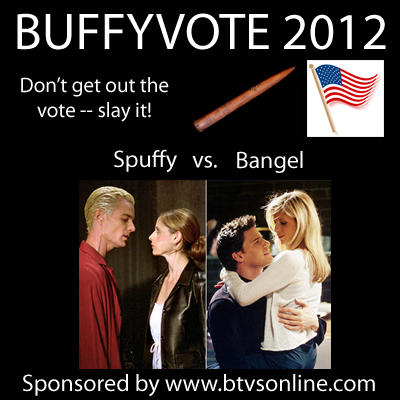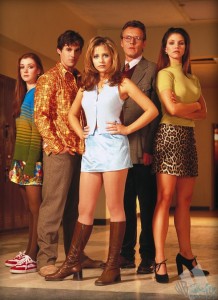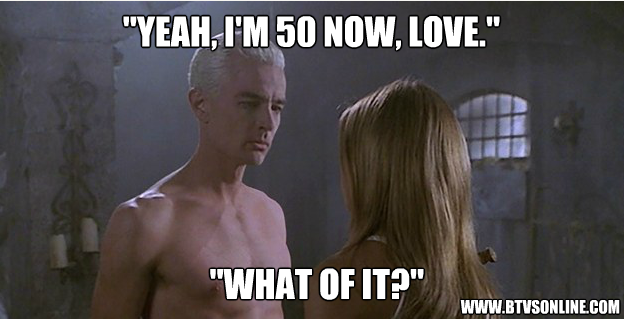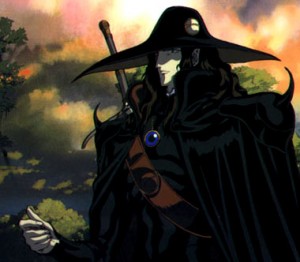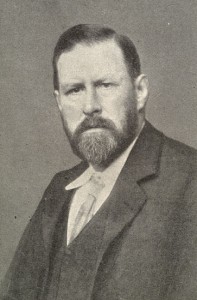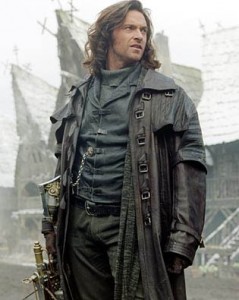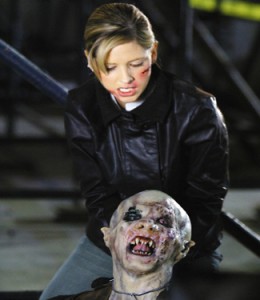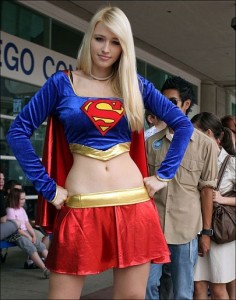 Editor’s note: Want to contribute a guest blog post? Contact us.
Editor’s note: Want to contribute a guest blog post? Contact us.
By Samuel Scott
The entertainment industry, just like any other business, has one goal in mind: to maximize profits. In the late 1960s, the music companies did not find and promote bands that played protest folk and rock music out of a desire (depending on your point of view) to do good and help the United States. The firms produced and marketed the music because they knew that the songs would sell well because massive numbers of people were already interested in protesting and other anti-establishment activities.
Music is marketed to pre-teens and teenagers in any decade because those are the people who buy most music in the first place. That’s the target demographic. As a former journalist and newspaper editor who is now a digital marketer in my day job who builds this hobby “Buffy” fansite on my personal time, I can tell you that the way in which products are marketed is this (in general terms):
- Identify the target market that has purchased similar products
- Research the demographic (age, gender, income, etc.) and what motivates them (what do they want, desire, fear, and so on)
- Tailor both the product itself and your marketing campaign to the demographic and to what motivates the demographic
From music to television to comic books, producers create products and market them based on what similar products and marketing methods have been successful in the past in line with the perceived demands and needs of the target market. Businesses generally do not like to take risks, so they usually rely on what has worked before — one flop of a band, television show, or film can cost millions of dollars.
Buffy as a Superwoman
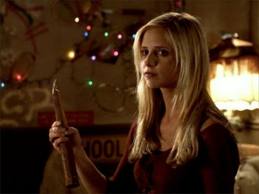 I began thinking about this topic when blogger and writer Emmie Mears approached Twitter user BtVSfan96 and myself with her idea to create and build a campaign to get more superwomen in popular culture — “superwomen” defined roughly as complicated, real characters (faults and all) who use their enhanced abilities to fight evil. (As of the time of this writing, we have held three live Twitter chats under the hashtag #SuperWomen — and the topic has trended, in various locations, each time.)
I began thinking about this topic when blogger and writer Emmie Mears approached Twitter user BtVSfan96 and myself with her idea to create and build a campaign to get more superwomen in popular culture — “superwomen” defined roughly as complicated, real characters (faults and all) who use their enhanced abilities to fight evil. (As of the time of this writing, we have held three live Twitter chats under the hashtag #SuperWomen — and the topic has trended, in various locations, each time.)
I signed up and promoted the initial press release out of two desires. Like Joss Whedon, the creator of “Buffy the Vampire Slayer,” “Angel,” “The Avengers,” and a lot more, I was raised by a “superwoman” single mother and admire images of women that go against mainstream stereotypes. Second, I am obviously a fan of “Buffy the Vampire Slayer” and have seen the devotion that the show inspires to this day, so I knew that such a campaign could be successful — albeit difficult.
It is hard because, in the end, businesses care about the return on investment (ROI): How much money will they make in return for their investments? If I have to choose between spending $1 million to create, say, new television show X or Y, I will need to know the likely viewership and advertising revenue of the first season. If X will make $1.1 million in advertising (a 10% return) and Y will earn $1.5 million (a 50% return), I will choose Y. The decisions behind making a given movie, TV program, or comic book will depend on the ROI in relation to the cost to produce it — and the goal is always to maximize net profit in the end.
So, in light of our campaign, my goal here is to provide a basic marketing analysis that can be used to prove to entertainment companies that creating more “superwomen” will indeed return a significant ROI and boost the presence of inspirational women in the superhero genre at the same time. Although I do not have the space here to create a lengthy marketing plan, the brief summary detailed below will contain the following general points:
- Proving that the superhero genre as a whole will generate significant revenue and profit
- Selecting the best medium in which to create and promote “superwomen” characters
- How to create superwomen that will empower women, appeal to the target audience, and sell well
The ROI of the Superhero Genre
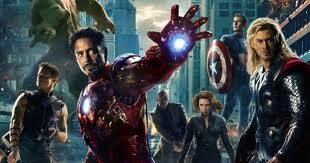 Before convincing media companies that is it profitable to create superwomen, it is necessary first to prove that the superhero/geek genre as a whole is worthwhile to (continue to) target. This is fairly easy, and just a few data points are necessary to make the point:
Before convincing media companies that is it profitable to create superwomen, it is necessary first to prove that the superhero/geek genre as a whole is worthwhile to (continue to) target. This is fairly easy, and just a few data points are necessary to make the point:
- The size of the comic-book market in North America has grown from roughly $310 million in 1997 to $675 million in 2011, an increase of 118% that far surpasses the estimated 14% increase in population over the same period of time — meaning a greater and greater percentage of Americans are reading comic books each year
- Comic-cons have become so popular that they are viewed as taking over entire cities whenever they are held (see “Comic-Con and the Business of Pop Culture“)
- The popularity of films from “The Lord of the Rings” to “The Dark Knight” to “The Avengers” goes without saying
- Comedian and actor Patton Oswalt’s 2010 rant in Wired magazine saying that geek culture has become so mainstream that it now must die
- A Christian Science Monitor article noting how “geek wisdom has gone mainstream“
- Whedon has been tapped to bring the S.H.I.E.L.D. organization to television
Second, I would pitch to media companies that the creation of great superheroes (supermen or superwomen) leads to long-term, stable revenue that will continue to grow over time rather than a short-term burst of income that eventually disappears. TV producers, for understandable reasons, generally love to create a blockbuster show like “Friends” that will top the ratings each week. However, the brand of a show like “Friends” falls relatively quickly after the show goes off the air. Just a few thoughts:
- Many years after “Friends” ends, how many people will recognize a Halloween mask of Chandler Bing (if one were to exist)? I once dressed in a “Buffy” costume shortly after college, and nearly everyone knew who I was. (And someone else at the party who I did not know was dressed as Spike!)
- Five or ten years from now, how many people will care enough to purchase the complete DVD set of “Friends” if they had never seen the show or had only seen a few episodes? Shows like “Buffy” and “Doctor Who” create cult followings of people who push the program onto friends and family members — in marketing, they are called “brand ambassadors” (see a blog post I wrote for my company on “Buffy” and brand ambassadors)
- The creation of a cult following around a superhero creates multiple, long-term, sources of revenue: merchandise, comic books, conventions, spin-offs, and countless others. (People buy “Buffy” T-shirts — who buys “Friends” T-shirts?) The creation of a show like “Friends” only has two sources of income: advertising during the original run and syndication rights afterwards — and most networks replace old, syndicated shows with new ones after a few years
The point: Mainstream, popular shows like “Friends” make networks a lot of money while they run, but that revenue quickly goes away after the show ends. Quality cult and superhero media, while not usually generating large levels of immediate income, leads to ever-increasing amounts of revenue from various sources as the fan base increases as well. Here’s a quick chart I created in Excel to demonstrate the basic point graphically (again, it is just the basic idea and not based on any specific data):
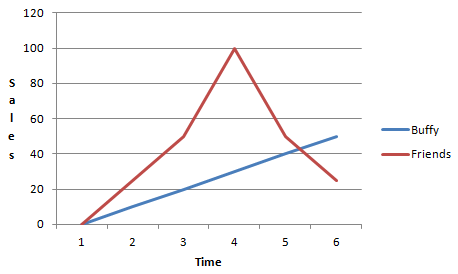
If you continue the lines into the future, you will see that the creation of great superheroes leads to more revenue over the long term. Superman and Batman still sell many decades later — I doubt that “Friends” will do the same. (However, it is important to note the “great” in my statement: the 1992 movie “Buffy” was not great; the television version was great. The product that you market and sell needs to be quality — see further below.)
The Best Medium for Superwomen
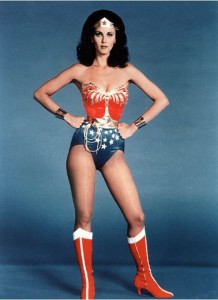 Third, it is necessary to demonstrate the best medium that will generate the greatest revenue for a new “superwoman.” For my purposes here, I will limit the options to film, television, and comic books. Here are the demographics of the “typical” consumer of these mediums:
Third, it is necessary to demonstrate the best medium that will generate the greatest revenue for a new “superwoman.” For my purposes here, I will limit the options to film, television, and comic books. Here are the demographics of the “typical” consumer of these mediums:
When pitching “superwomen” to media companies, it is crucial to advocate the medium that will give the greatest ROI. Television first (and perhaps film second) seems to be the best method. Despite the attempts of comic-book producers to reach out to women, there is little significant growth in market share. From “Buffy” to “Game of Thrones,” TV seems to be the best vehicle to reach women in this context today.
One choice that marketers face is whether to use a medium that is already popular with the target demographic or convince the audience to use a different medium with which they are largely unfamiliar (or, perhaps, both). There are benefits and drawbacks to each. In this context, a superhero woman on television would be much easier to promote successful since more women already use the medium. However, marketing a new comic book to women would potentially open the entire comic-book market to them in general — and thereby possibly leading to larger, never-before-acquired profits in that specific medium.
Still, the second option is more difficult. Women already watch television, so there is no need to persuade them to use the medium. To get women to respond to a comic-book character, you would first need to do an additional marketing campaign to attract them to comic books in the first place as well. Since marketers and businesses are conservative by nature and would likely not take a great risk, it would likely be better to argue for TV (and perhaps film) superheroes but not comic books in this context.
How to Create Superwomen in TV that Sell
 According to a writer named Whisky, the target demographic of superhero stories in general (at least, perhaps in the past) has been that of young men who were not popular at school or with the best-looking girls:
According to a writer named Whisky, the target demographic of superhero stories in general (at least, perhaps in the past) has been that of young men who were not popular at school or with the best-looking girls:
The secret to comics is who created and read them, back when they were popular, first in the late 1930’s and early 1940’s, and again in the 1960’s (the “Golden” and “Silver” age respectively). The Comics creators were mostly Jewish, nerdy-smart guys, who liked the pretty girls who had no time for them, and preferred the wealthy athletes in High School and College. In wish fulfillment, these mostly Jewish artists and writers, who in the 1930s and early 1940s lived at a time when actual, real Nazis were active in America (the German-American Bund), created (almost exclusively male) characters that provided wish fulfillment to every young man and boy who was not a high-status, wealthy athlete, liked by guys and pursued by girls.
Which is about 90% of the male population, at one time or another. That’s what comics were, and the reason for the characters success. Superman is the most globally recognized fictional character. Because of that secret.
Yes, it’s really that simple. Male wish fulfillment is the secret to Superhero success.
Of course, Whiskey’s analysis is a bit stereotypical. However, the truth is that marketers must operate in stereotypes because they work with and target demographic groups in general. What media do women generally like? What messages to Hispanic people generally respond to? What generally motivates the Baby Boomer age bracket? And so on. This is not to say that all women, Hispanic people, or Baby Boomers are the same — but it is meant to focus on whatever trends are generally prevalent within a given demographic category. If women, for example, use Facebook more and that men use Twitter, then marketers looking to target females would focus more on Facebook.
This mindset can be used in the successful marketing of “superwomen.” If Batman and Spider-Man were “wish fulfillment” among men, then a female superhero would need to be “wish fulfillment” for women. In the past, female superheroes were written for the aforementioned, geeky men — they were merely “hot chicks with superpowers” (to borrow a line from “Buffy”) to whom the demographic would be sexually attracted. If the goal is to popularize “superwomen” that are complete, complicated characters who empower women and to whom they can relate, then the target demographic needs to be women, not men.
So, a good “superwoman” needs to function as “wish fulfillment” for women onto which they can project their insecurities and worldly problems onto characters who deal with those issues while fighting evil — someone with whom females can identify. And that is one reason, among many, why “Buffy the Vampire Slayer” was and remains so popular. The female Scoobies and other minor characters, as I had noted in the prior blog post for my company, dealt with issues that the young viewers encountered in their daily lives (but in a metaphorical way): the problems in dating, domestic violence, parental conflict, gender roles, sexual harassment, and so much more.
Creating Good Superhero Movies and TV
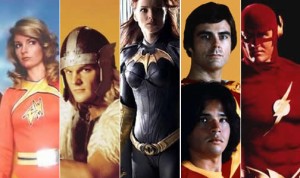 If we agree that the superhero genre is profitable in general and that television is the best medium to attract female attention, then the most-profitable way to introduce “superwomen” is to create and market complicated superhero TV characters with whom the target, female demographic can identify — just as with the prior heroes aimed at men. “Buffy the Vampire Slayer” proved that this can be done — the only issue is to create something similar in quality and then market the idea in a good way.
If we agree that the superhero genre is profitable in general and that television is the best medium to attract female attention, then the most-profitable way to introduce “superwomen” is to create and market complicated superhero TV characters with whom the target, female demographic can identify — just as with the prior heroes aimed at men. “Buffy the Vampire Slayer” proved that this can be done — the only issue is to create something similar in quality and then market the idea in a good way.
As Brad Brevet notes at Rope of Silicon, there is the forthcoming issue of what can be termed “market saturation”:
We are coming to an age where a superhero movie can’t be half-assed anymore if it wants to be successfully turned into a highly profitable franchise. Sure, you can keep churning out films like Ghost Rider and Fantastic Four, but they will keep on making $100-130 million each time and unless studios figure out how to make them cheaper it just doesn’t seem to pay off.
Moreover, Mark Lee at OverThinkingIt poses this question:
In other words, have we reached Peak Superhero, the point where we’ve maximized the exploitation of a finite resource and are now entering a period of inexorable decline?
“Buffy the Vampire Slayer” introduced the vampire genre to a new generation of people and spawned media ranging from “Twilight” to “True Blood” to “The Vampire Diaries.” Eventually, the public grew tired of vampires and moved onto other, newer trends. And trend may be the return of traditional superheroes including Batman, Spider-Man, and Iron Man. (In my opinion, superheroes are popular at the moment because people gravitate towards simplistic, black-and-white, good-versus-evil in times of war and economic and political stress — they make a complicated world seem simple.)
However, this fad, too, shall pass. (At least until it becomes a fad again — all genres come and go in cycles.) The best way to keep it alive — and this is another point that I would tell media companies — is to create something completely new, unique, and quality. And a female superhero who is more than just “boobs and guns” à la Buffy Summers is proof that it would be a profitable thing to do. A good, female character revolutionized the vampire genre, and the same would occur in the superhero one.
Samuel Scott is the founder and publisher of Buffy the Vampire Slayer Online. You can follow him on Facebook, LinkedIn, Google+, and Twitter as well as on his personal website.
Like this post? Submit it to Whedonesque!
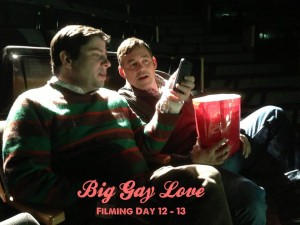 Nicholas Brendon — best known to all of us as Xander in “Buffy the Vampire Slayer” — is co-starring in a new film named “Big Gay Love.” However, the producers need to raise just over $3,000 in the next seven days (at the time of writing) on Kickstarter to make it happen! You can get more information and support the film here.
Nicholas Brendon — best known to all of us as Xander in “Buffy the Vampire Slayer” — is co-starring in a new film named “Big Gay Love.” However, the producers need to raise just over $3,000 in the next seven days (at the time of writing) on Kickstarter to make it happen! You can get more information and support the film here.





